Ask Ethan: How Small Can A Piece Of The Universe Be And Still Expand?

Galaxy-sized? Human-sized? Atom-sized? Even smaller? How tiny can a bit of space be and still expand?
“We now have the best picture of how galaxies like our own formed their stars.” -Casey Papovich
The expansion of the Universe has a long and amazing history. When Hubble first noticed the relationship between a galaxy’s distance from us and how redshifted its light was, he knew immediately it was a consequence of Einstein’s General Relativity. When Hubble announced his discovery, Einstein immediately recanted his cosmological constant — a “fudge factor” to keep the Universe static — and called it his greatest blunder. But while the space between galaxies expands, atoms, human beings and planets remain the same size over time. What determines this? Jeroen van Rijn wants to know:
What scale limit if any are we talking about when we say the universe expands? Does it mean Planck length isn’t a constant so much? Do atom’s orbits grow corresponding with this stretching of space or does the strong force counteract this?
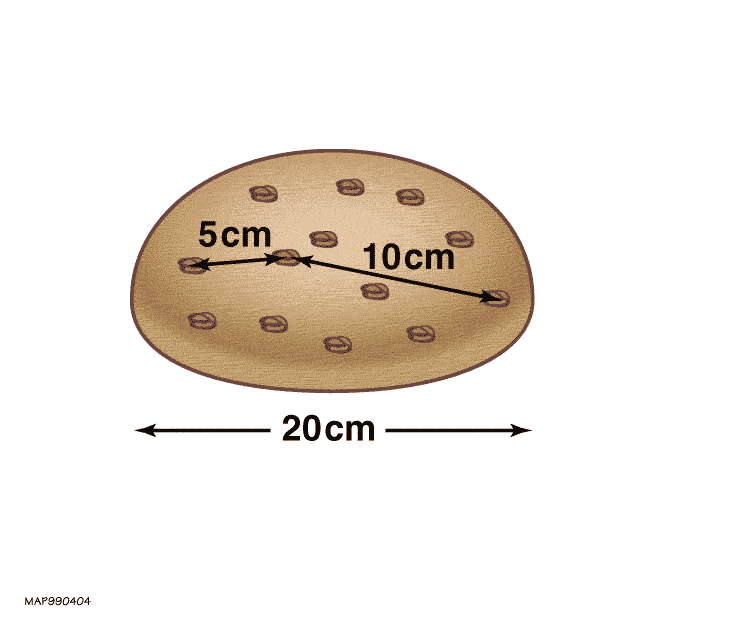
The expanding Universe is a tough phenomenon to wrap your head around, because it’s very counterintuitive. Perhaps the best analogy is to imagine that the fabric of space is like a ball of dough, suspended in an oven in zero gravity. As the dough bakes, the bread leavens and rises, and it expands uniformly in all directions. But that’s just for empty space, or space with nothing in it. What if you wanted to have space that contained things like matter: protons, atoms, humans, planets, galaxies or even clusters of galaxies? There are two ways you could imagine the expansion.
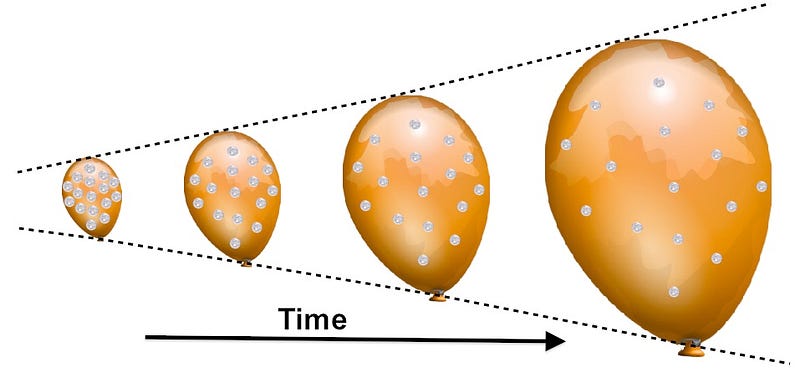
One is like the surface of a balloon with coins glued to it, where the coins themselves don’t change as the balloon’s surface expands. The Universe gets bigger and bigger, and all the space between the individual particles — or individual galaxies — grows as well. A coin will appear to recede from a nearby coin at a particular rate, while a coin twice as far away will appear to recede at double that rate. The think is that any coin will perceive that same effect: its perceived speed, and hence the redshift (stretching) of the light, will appear to depend solely on the distance of the coin you’re looking at in this expanding space. This much we know happens, and we’ve known it since the 1920s. This was the very same relationship that “Hubble’s Law” demonstrated to us was at play in the Universe.

But the other way you could imagine this is by considering the surface of a balloon with objects painted onto it. As the balloon inflates and its surface expands, it carries the mark of the paint along with it. Sure, the distant objects will all move away from one another in accord with Hubble’s Law, but in this case, the objects themselves would also expand along with the fabric of space.
So what is it that the Universe does? What scale does space expand on? One thing we can do is check the Universe itself. When we look out at the distant galaxies, we should see them redshifted and smaller/lower in mass, as greater distances also mean earlier times.
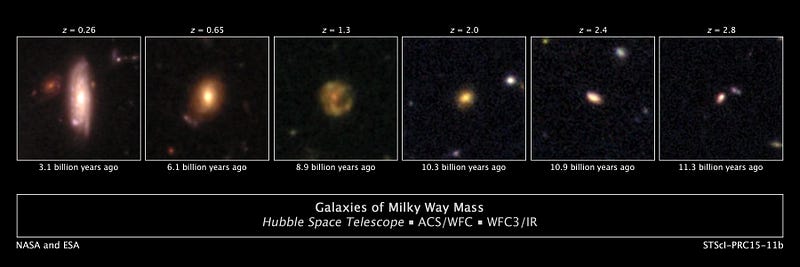
We do see that, but we also see some important other signatures:
- The galaxies have the same spectral lines at high redshifts, telling us that the sizes and properties of atoms billions of years ago are the same as they are today.
- That the physical size of the galaxies are determined by their masses alone; that galaxies of the same mass today and at early times are the same physical size.
- And that the way the cosmic web (and large-scale structure) grows or doesn’t is dependent only on the amount of mass present in a given region of space.
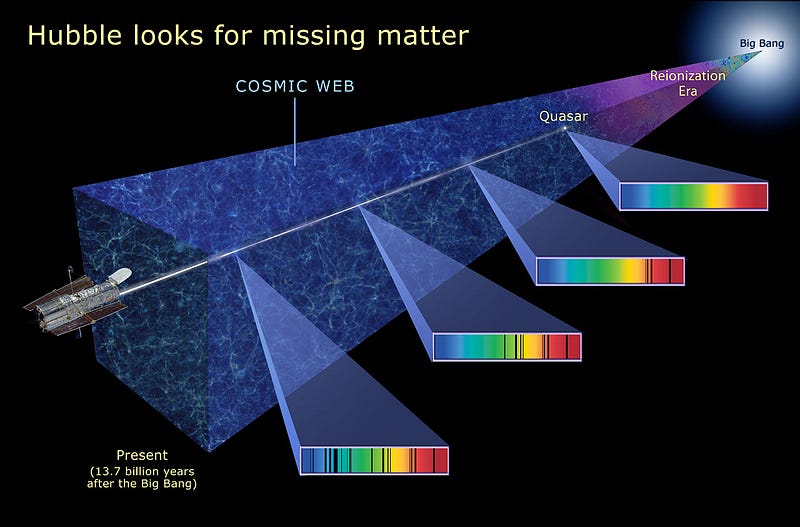
So it looks like it’s the “coins” analogy rather than the “paint” analogy. When we look out at the Universe, we see that the fabric of space itself expands in all circumstances unless there’s another force that works to bind an object together. This actually fits in theoretically with what we expect completely, because unlike we commonly think of it, the expansion isn’t a force, but is rather a rate. When something becomes bound together, it doesn’t matter what the force doing the binding is, whether it’s a nuclear force in the case of protons and nuclei, whether it’s an electromagnetic force in the case of atoms, cells or humans, or whether it’s a gravitational force in the case of planets, stars, galaxies or even clusters of galaxies.
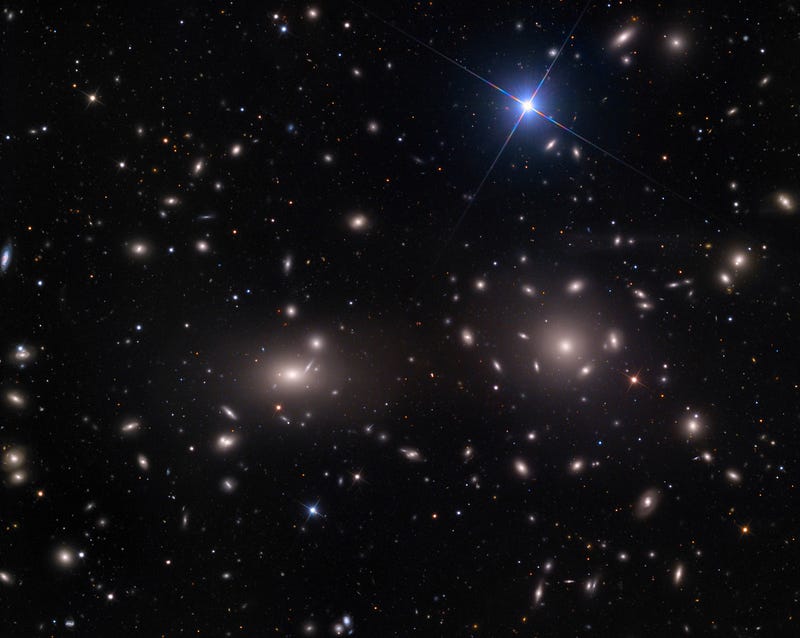
While the fabric of space itself expands, it expands at a certain speed-per-unit-distance. (In reality, this is just units of inverse time.) As a rule-of-thumb, if the force between any two objects causes them to attract at a greater rate than the expansion of the Universe would cause the space between them to expand, then they no longer act like paint; they act like coins. Our bodies are bound together; every atom is bound together; our local group is already bound together; even the entire Coma cluster of galaxies (above) is bound together! But it’s important to remember that this is all relative. The expansion of the Universe doesn’t affect our local group or anything within it because our local group is too tightly bound for that, but go outside of it and space itself continues to expand. This is why distant galaxies (and other bound structures) continue to recede from us, even as individually we’re all locally bound to our own regions of space.
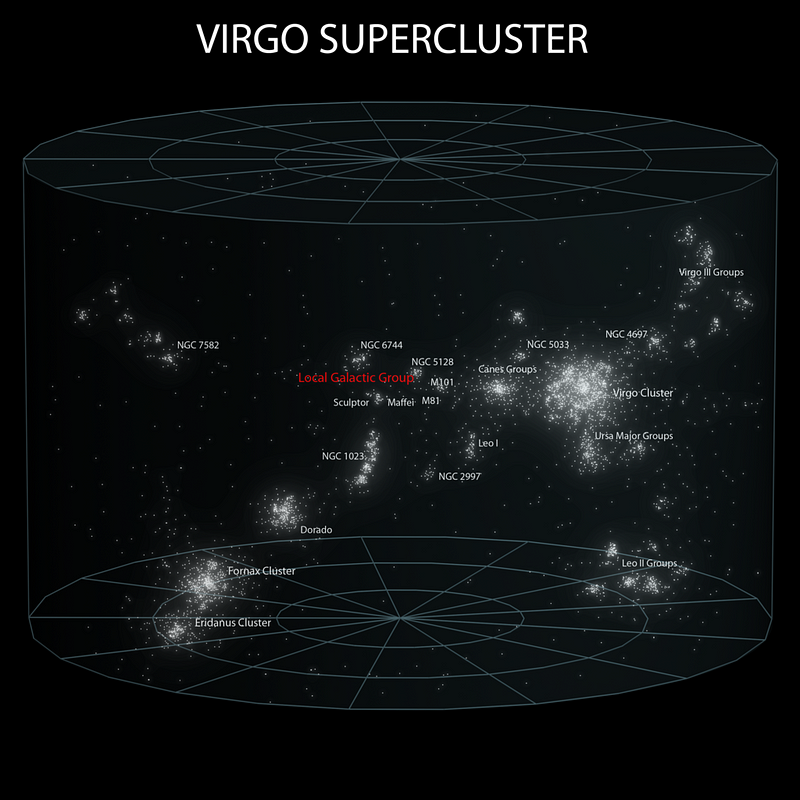
But we can go to arbitrarily small regions of space in the unbound regions, where there is no matter present, and we’d find that any sized-region — light years, kilometers, microns, proton-sized, or Planck-sized (or even smaller) — expands in direct accord with Hubble’s Law. The rate of the expansion of space, in General Relativity, allows you to treat the fabric of space as though it’s completely continuous, with no need to quantize it as you might in quantum physics. This remains valid for the expansion of the Universe, right up until the moment where you put a bound structure inside it! There’s no fundamental limit to how small a bit of space can be and still expand, but it needs to either be empty or sufficiently large so that the “structure” that you’re in can’t overcome the expansion itself.
This post first appeared at Forbes, and is brought to you ad-free by our Patreon supporters. Comment on our forum, & buy our first book: Beyond The Galaxy!





